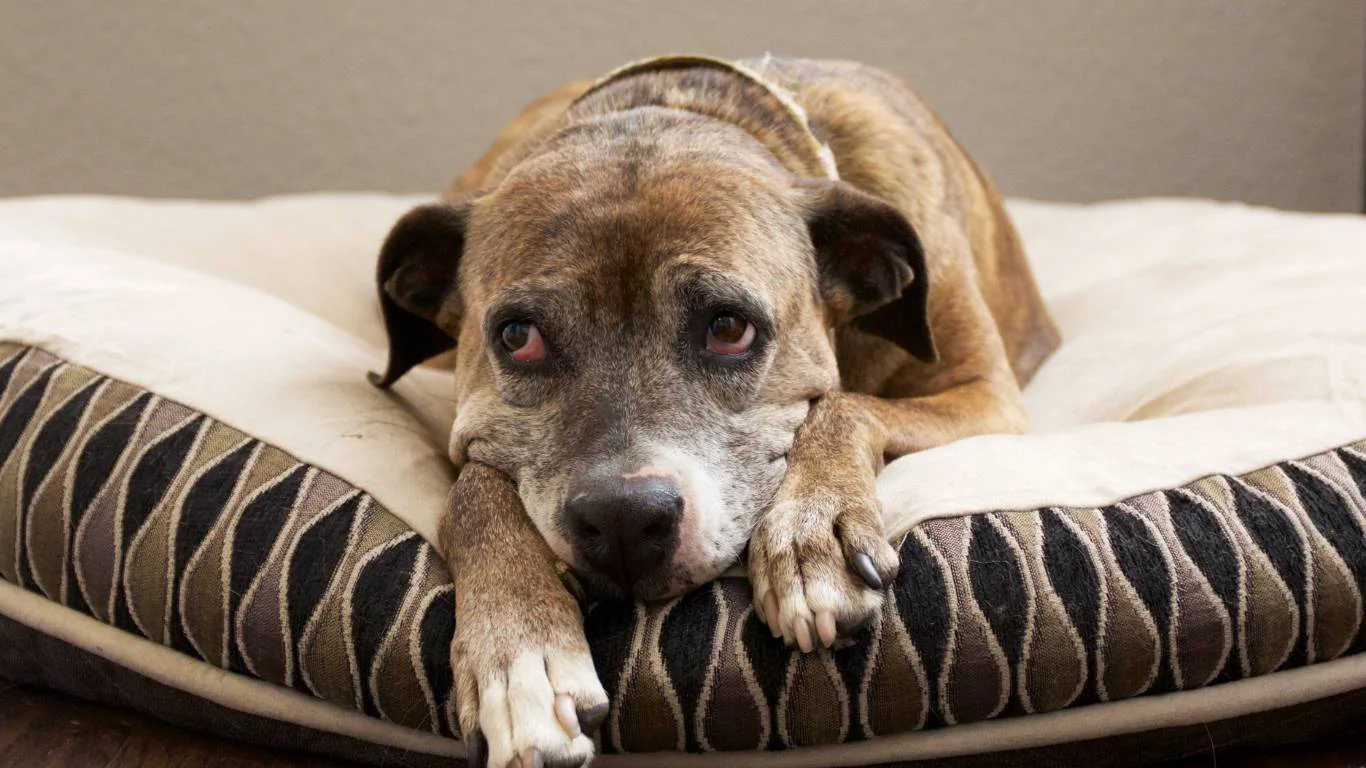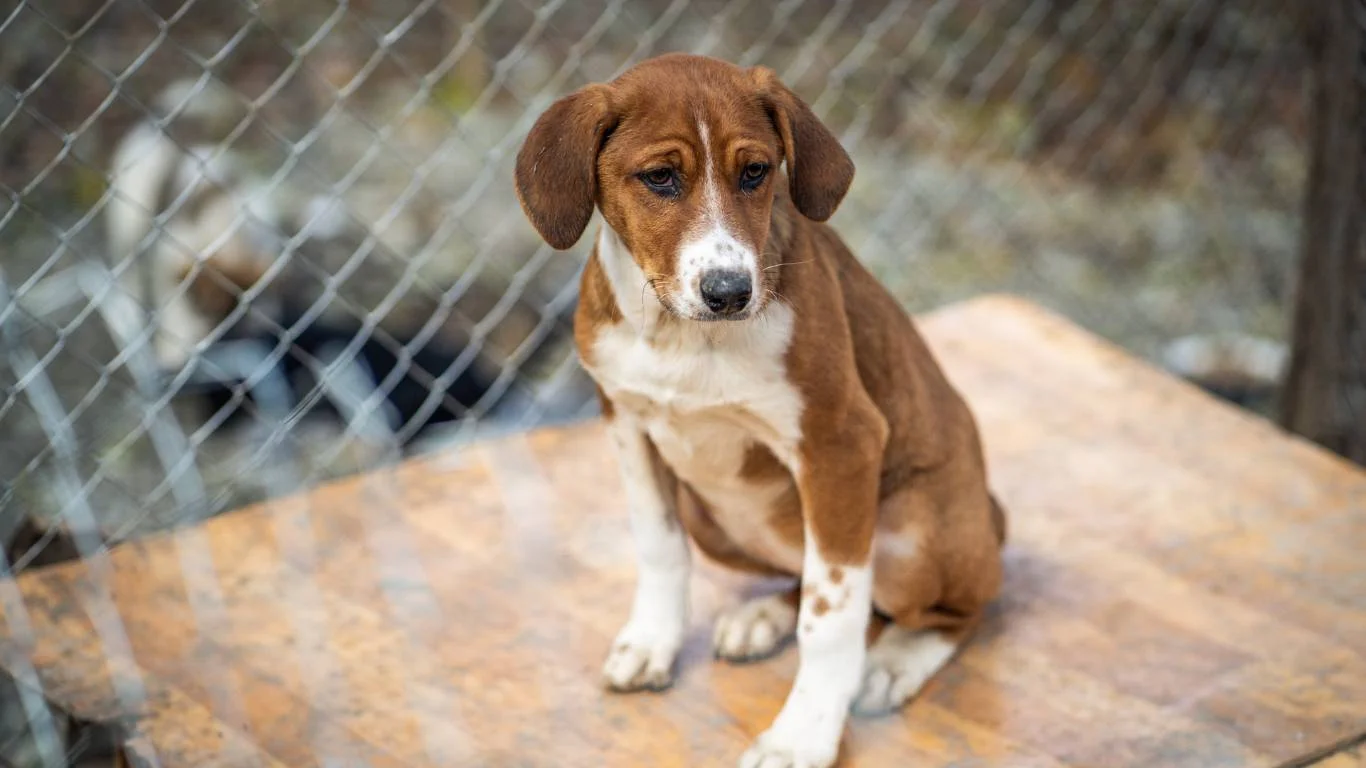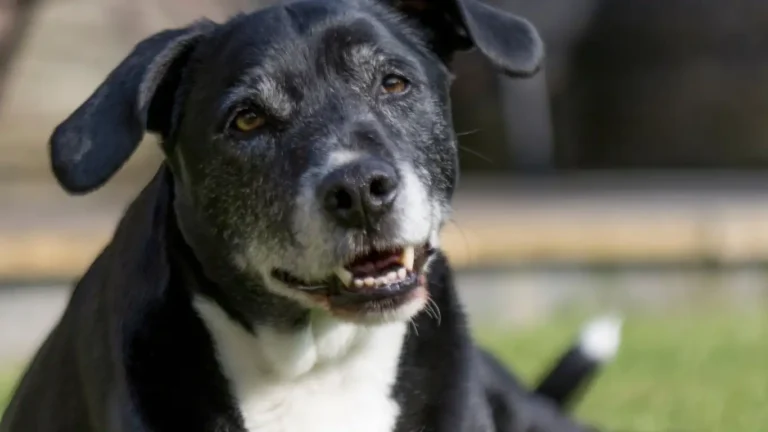The Dangerous Effects of Chocolate Poisoning in Dogs
As a pet nutritionist and expert in pet care working in veterinary clinics, I’ve seen my fair share of curious pups who just can’t resist getting into things they shouldn’t. One of the most common—and most dangerous—things dogs tend to get into is chocolate. The dangers of chocolate poisoning in dogs are real, and the symptoms can be both scary and life-threatening if not addressed quickly. As much as we love to indulge ourselves with chocolate treats, it’s important to remember that chocolate is a big no-no for our furry friends.
Understanding Chocolate Poisoning in Dogs

Chocolate contains substances called theobromine and caffeine, both of which are toxic to dogs. While humans can easily process these substances, dogs metabolize them much more slowly. This can lead to a toxic buildup in their system that can cause severe reactions. The amount of theobromine varies depending on the type of chocolate, so even a small amount can be dangerous if it’s the wrong type.
Why Dogs Are Sensitive to Chocolate
So, why exactly is chocolate so harmful to dogs? It all comes down to their metabolism. Dogs have a slower rate of eliminating theobromine from their systems compared to humans. In fact, while it only takes a couple of hours for a person to digest and eliminate theobromine, dogs can take up to 24 hours or longer to process it fully. This extended exposure means that even small amounts of chocolate can lead to dangerous side effects.
Different Types of Chocolate and Their Toxicity Levels

- Dark chocolate: This is the most dangerous type for dogs, containing up to 15 times more theobromine than milk chocolate. A small amount of dark chocolate can cause serious symptoms and even be fatal.
- Milk chocolate: While it’s less toxic than dark chocolate, milk chocolate can still cause harm, especially in smaller dogs or if they consume it in large quantities.
- White chocolate: White chocolate contains very little theobromine but still has fat and sugar, which can cause other health issues like pancreatitis if ingested in large quantities. It’s not as deadly as other types but shouldn’t be considered safe.
- Cocoa powder: Cocoa powder is highly concentrated and can be just as toxic as dark chocolate. Even small amounts can cause a severe reaction.
Symptoms of Chocolate Poisoning in Dogs

So, you’ve discovered that your dog has gotten into some chocolate—what now? It’s essential to recognize the symptoms of chocolate poisoning early on. The severity of the symptoms depends on the type and amount of chocolate consumed, as well as the size of the dog. For smaller dogs, even a small bite of chocolate can lead to serious symptoms.
Early Symptoms to Watch Out For
- Restlessness: One of the first signs of chocolate poisoning is hyperactivity or restlessness. Your dog may appear agitated and have difficulty sitting still.
- Vomiting: If your dog eats chocolate, their body will likely try to expel the toxins by vomiting. This can happen within the first few hours after ingestion.
- Increased heart rate: The theobromine in chocolate can cause a rapid heartbeat, which is one of the most dangerous symptoms. You might notice your dog panting more than usual or acting unusually energetic.
- Diarrhea: Chocolate is a stimulant, and it can upset your dog’s digestive system, leading to diarrhea.
More Serious Symptoms
If your dog consumes a large quantity of chocolate or if the symptoms are left untreated, things can escalate quickly. More severe signs of chocolate poisoning include:
- Seizures: As the theobromine builds up in your dog’s system, it can lead to seizures, which can be life-threatening if not treated immediately.
- Muscle tremors: You might notice your dog’s muscles twitching uncontrollably, which is another sign of severe toxicity.
- Elevated body temperature: Chocolate poisoning can cause your dog’s body temperature to rise, leading to heatstroke.
- Coma or death: In extreme cases, chocolate poisoning can cause coma or even death. It’s crucial to act fast if you suspect your dog has ingested chocolate.
How Much Chocolate is Toxic for Dogs?
The amount of chocolate that will cause poisoning depends on several factors, including your dog’s size, the type of chocolate, and how much they ate. Here’s a rough guide to how much the different types of chocolate can affect your dog:
- Dark chocolate: Even small amounts (as little as 0.3 ounces per pound of body weight) can be toxic to dogs.
- Milk chocolate: Milk chocolate is less toxic, but still, around 1 ounce per pound of body weight can cause symptoms.
- White chocolate: It’s unlikely to cause serious toxicity, but consuming large quantities could lead to digestive issues or pancreatitis.
If you’re unsure about how much chocolate your dog has eaten, it’s always better to err on the side of caution and consult with a vet immediately.
What to Do If Your Dog Eats Chocolate

If your dog has ingested chocolate, it’s natural to panic a bit. I’ve been there—one of my clients once rushed into the clinic with a frantic look in her eyes because her golden retriever had eaten an entire chocolate cake. It was one of those “Oh no” moments, and I could see the worry in her face. But the good news is, acting quickly can make all the difference. So, what should you do?
Step 1: Assess the Situation
The first thing to do is take a deep breath and try to assess how much chocolate your dog has eaten. Is it a small piece, or did they eat an entire box of truffles? Knowing the amount of chocolate consumed will help the vet determine the best course of action. Also, try to figure out the type of chocolate, as dark chocolate is far more dangerous than milk chocolate.
Once you’ve assessed the situation, look for early signs of poisoning, like restlessness, vomiting, or diarrhea, which we discussed earlier. If you notice any of these symptoms, don’t wait around. The sooner you get help, the better.
Step 2: Contact Your Veterinarian
Whether you notice symptoms or not, it’s always a good idea to contact your veterinarian right away. They will likely ask for the following information:
- The type of chocolate your dog ate
- How much chocolate your dog ate (estimate if necessary)
- Your dog’s weight
- The time that has passed since your dog ate the chocolate
If your vet is unavailable, call an emergency animal clinic or even the Pet Poison Hotline at (855) 764-7661. They’re available 24/7 and can offer advice on what to do next. Trust me, as someone who’s worked in emergency pet care, I can’t stress how helpful this resource can be in high-stress situations.
Treatments for Chocolate Poisoning in Dogs

When you take your dog to the vet, the treatment plan will depend on how much time has passed since your dog ate the chocolate, their weight, and the severity of their symptoms. Here’s a look at some common treatments you might encounter:
Inducing Vomiting
If it’s been less than two hours since your dog ate the chocolate, the vet may recommend inducing vomiting. This is one of the quickest ways to get the chocolate out of your dog’s system before it’s absorbed into the bloodstream. The vet will typically use hydrogen peroxide or other safe methods to make your dog vomit. While it sounds pretty intense, it’s often the best way to prevent further complications.
Activated Charcoal
If it’s been longer since your dog ate the chocolate or if vomiting wasn’t an option, the vet may administer activated charcoal. This is a special substance that binds to toxins in the digestive tract, preventing them from being absorbed into the bloodstream. Activated charcoal is usually given orally, and the vet will monitor your dog for any side effects.
IV Fluids and Monitoring
In more serious cases, especially if your dog is showing severe symptoms, the vet may need to provide intravenous fluids to help flush the toxins from their system. This also helps to support your dog’s vital organs while they recover. For severe cases of poisoning, your dog may need to stay at the clinic for a day or two for close monitoring and care.
Medications for Heart Rate and Seizures
If your dog’s heart rate is dangerously elevated, the vet may prescribe medications to help control it. In some cases, if seizures occur, medications to control the seizures might be necessary. Fortunately, these medications are quite effective, and most dogs will recover fully with the right treatment.
Preventing Chocolate Poisoning in Dogs

While we can’t always keep an eye on our dogs 24/7 (trust me, if I could, I’d be doing that all day!), there are several proactive steps you can take to prevent chocolate poisoning in the first place. As a pet nutritionist, I always stress prevention because it’s so much easier than dealing with a crisis later. Here are some of the best strategies:
Store Chocolate Safely
The most obvious prevention tip is to keep chocolate out of your dog’s reach. I know it’s tempting to leave a candy bar on the kitchen counter, but that’s exactly the spot where your dog will find it—especially if they’re a curious one. Use dog-proof containers for storing sweets, and make sure chocolate isn’t left unattended on low tables or countertops.
Teach “Leave It” Command
If you haven’t already, teaching your dog the “leave it” command is a must. This command can be a lifesaver if your dog is eyeing something they shouldn’t have. With consistent training, your dog will learn to leave food (including chocolate) alone when asked. Plus, it’s a great command to have for other dangerous situations too, like when you’re out on walks and they try to pick up something off the ground.
Keep Holiday Treats Out of Reach
Holidays are a particular concern when it comes to chocolate, with Halloween, Christmas, and Easter being prime chocolate-heavy seasons. Chocolate Easter eggs or holiday gift baskets are often left in places dogs can reach, and those chocolate treats are extremely tempting to them. Be extra vigilant during these times and make sure all chocolate is kept high up and out of sight.
Educate Your Family and Friends
Make sure everyone in your household and any visitors know that chocolate is toxic to dogs. I’ve seen plenty of well-meaning people unknowingly offer dogs chocolate treats, thinking it’s okay. It’s essential to inform guests, especially kids, about the dangers and ask them to avoid giving your dog any chocolate or other potentially harmful foods.
By taking these simple steps, you can greatly reduce the risk of chocolate poisoning in your dog and keep them safe and healthy. As a pet care expert, I’ve seen first-hand how devastating it can be when a dog gets into chocolate, but I’ve also seen how a quick response can save lives. So, always be vigilant and prepared—your dog’s health is worth it!
Long-Term Effects of Chocolate Poisoning in Dogs

While most dogs recover quickly from chocolate poisoning with prompt treatment, there are a few lingering effects that pet owners should be aware of. The theobromine in chocolate can cause temporary damage to organs like the heart and kidneys, especially if the poisoning was severe. I’ve seen some cases where dogs who ingest large quantities of chocolate take weeks to fully bounce back, even after the initial treatment phase.
One of the most common long-term issues is cardiac arrhythmia (irregular heart rhythms). This can happen if a dog’s heart was stressed by the elevated heart rate caused by chocolate toxicity. In some severe cases, the dog might need to be monitored for heart health for a while after their recovery. If you notice any unusual behavior like a slow or fast heart rate or excessive panting after your dog has recovered, it’s worth a visit to the vet just to be sure.
Kidney Damage and Dehydration
Another potential long-term issue from chocolate poisoning is dehydration and kidney damage. During the recovery phase, your dog may be at risk of dehydration from vomiting, diarrhea, and other symptoms of poisoning. The kidneys can be impacted if the dog wasn’t given enough fluids or if the poisoning was severe. That’s why IV fluids during treatment are so important—they help protect your dog’s kidneys while flushing out toxins.
If you notice your dog becoming lethargic or if they’re drinking excessively, it’s always a good idea to bring them in for a check-up. These could be signs of kidney stress or dehydration that didn’t completely resolve during initial treatment. Keep a close eye on your dog’s overall health after a poisoning incident, and never hesitate to get a second opinion from your vet if something feels off.
Chocolate Poisoning and Breed Sensitivity
It’s also worth mentioning that some dogs may be more sensitive to chocolate than others. Smaller dogs, for instance, will have a more pronounced reaction to chocolate because they have less body mass to dilute the toxins. But certain breeds are more prone to chocolate toxicity, and in my experience, these breeds tend to show symptoms faster.
Breeds at Higher Risk
While all dogs are at risk of chocolate poisoning, some breeds seem to be more sensitive than others. Dogs like Chihuahuas, Dachshunds, and Yorkshire Terriers are particularly vulnerable due to their small size. These little guys can ingest a relatively small amount of chocolate and still experience severe symptoms. However, larger breeds like Labrador Retrievers and Golden Retrievers can also fall victim to chocolate poisoning, especially if they get into a large amount of chocolate.
I’ve had a case where a family’s Golden Retriever—who was a pretty large dog—ended up at the clinic after eating a batch of chocolate brownies. Despite his size, the theobromine still had a profound effect on him, and it took longer than expected for his heart rate to stabilize. It’s always good to be aware of breed-specific tendencies and act quickly when you suspect chocolate poisoning.
When to Seek Emergency Help
When it comes to chocolate poisoning, timing is everything. Sometimes, waiting even a few hours can make a significant difference in the outcome. If you suspect that your dog has eaten chocolate, it’s crucial to act as quickly as possible. Don’t wait for symptoms to appear—if you know they’ve ingested chocolate, contact your veterinarian right away. As a pet nutritionist, I’ve seen time and time again that when owners hesitate, it can result in much more serious complications.
Symptoms That Require Immediate Attention
There are a few specific symptoms that should raise a red flag and lead you to seek emergency help right away. These include:
- Severe vomiting or diarrhea that doesn’t stop.
- Severe agitation or restlessness that lasts longer than a few hours.
- Difficulty breathing or rapid breathing, which could indicate heart problems or respiratory distress.
- Seizures, which are a clear sign of a severe reaction to the toxins in chocolate.
- Extreme lethargy or weakness, which could indicate that your dog’s organs are struggling.
Remember, quick action is key when it comes to chocolate poisoning. If you notice any of these severe symptoms, don’t wait to see if they get better. Get your dog to the vet immediately. In many cases, fast treatment can make the difference between a full recovery and serious, long-term complications.
References
For more information about chocolate toxicity in dogs and how to keep your pet safe, check out the following resources:
Disclaimer
The information provided in this article is intended for general informational purposes and should not be considered a substitute for professional veterinary advice, diagnosis, or treatment. Always consult your veterinarian for concerns regarding your pet’s health and wellness. If you believe your pet has consumed chocolate or any other toxic substance, contact a veterinarian or pet poison hotline immediately.
As a pet care expert and nutritionist, I’m passionate about helping pet owners make informed decisions to keep their furry friends safe and healthy. Whether you’re dealing with chocolate poisoning or another emergency, remember that knowledge is power. Take action quickly, and your dog will be back to their happy, wagging self in no time!






